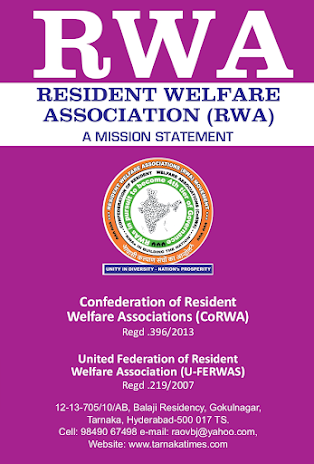The focal and central theme of the 7th Conference in Delhi is WATER MANAGEMENT. Over the last decade, lot of educative information and statistics on this crucial theme have been relayed by various organizations throughout the globe. Rightly, the entire world recognizes there is an urgent need for effective management of water resources, their prudent use and recycling of wastewater. Without further elaborating on this, let me submit a few vital points in this regard relating to India.
Average rainfall in India generates about 70,000 TMC of water. Of this 20,000 TMC is harnessed in various sources like lakes, dams, RWHs, canals, etc., and the balance 50,000 TMC is wasted and flows into the sea.
Almost every year, a few States experience floods, causing misery and damage to property, agriculture operations, livestock and human lives. Simultaneously, there exist a few States, where the perennial shortage of water is being reported; it is a pity that even in these States huge quantity of rainwater is not being harnessed but permitted to flow into the seas.
Average rainfall in India generates about 70,000 TMC of water. Of this 20,000 TMC is harnessed in various sources like lakes, dams, RWHs, canals, etc., and the balance 50,000 TMC is wasted and flows into the sea
In this background, it is pertinent to recall the move to interlink rivers, as a panacea for not only warding off floods/shortage of water in a few States, but also for navigation purposes. Trees are the natural rainwater harvesters. Unfortunately, the per capita tree population in India is lesser than 125, whereas in other countries it is higher. Though RWH pits have been dug up in a few States, they are not regularly cleansed of slush and properly maintained thus defeating the very purpose of their existence. In an average rainfall State, well-maintained RWH system can contribute to effective re-charging of groundwater.
Important among such studies are by:
- Sir Arthur Cotton in the year 1858,
- . Dr. K.L. Rao in the year 1972;
- . Captain Dastur – Garlands Canal - Year 1980 and
- Bharata Ratna DR. APJ Abdul Kalam, Ex-President of India
CREATION OF NATIONAL WATER GRID IN 2002.
On a PIL petition filed in 1994, the Supreme Court delivered its judgment during 2002 directing the Central Government to complete the entire project of interlinking by the year 2016. Though all political parties have been, for decades, declaring in their manifestos that inter-linking of rivers shall be achieved by them, the progress in this regard has been very slow and tardy, notwithstanding the Supreme Court direction, providing the cut-off year as 2016.
As per the norms, environmental clearance and inter-state co-ordination are a pre-condition for implementation of the Project. The recent announcement by the Government that they are actively seized of the matter and that they are providing a huge sum for realizing the inter-linking provides us a sigh of relief. At the same time, as an apex organization, we have to use our machinery to effectively follow up and pursue this issue and achieve early implementation of the Project.
It is often said, “India lives in its villages”. The process of urbanization in India is poor when compared to developed countries. This only emphasizes the dictum that India continues to live in villages. The main avocation in villages is agriculture which is now suffering mainly for want of enough water. That more than THREE LAKH farmers have committed suicide in the last decade is a matter of great concern and regret for any civilized society.
This background beckons us to ensure:
- Planting a large number of saplings and sustaining them to grow into huge trees;
- Provision of RWH in every house/complex and also on the streets/ roads;
- Desilting of lakes, removal of encroachment in waterways/lakes and restoring them to their original shape and dimension;
- Inter-linking of rivers at the earliest possible time.
The above tasks are possible to be achieved and sustained when the RULE OF LAW is observed, sincerely implemented and sustained by the authorities-that-be, without fear or favour. Let us all decide to labour in the above direction, and extend our unreserved support for the implementation of these noble objectives.







0 Comments